The conceptually simple idea to determine current by measuring voltage across a known resistor shows the subtle nature of design tradeoffs.
Part 1 of this article looked at one important aspect of the choice of resistor value in current-sensing applications, but it was only the electrical impact. However, the thermal impact related to resistor I2R self-heating power dissipation is also significant and plays into the integrity of the reading as well as resistor selection.
This unavoidable self-heating has several negative consequences:
- it represents heat, which adds to the system’s thermal load and so must be managed and removed.
- it represents wasted power and reduced efficiency, thus reducing runtime in battery-powered products.
- and perhaps less apparent but especially critical, the heat causes a rise in temperature of the current-sensing resistor, which changes the resistor’s value and thus affects the credibility of the current determination (which is determined by the voltage reading across that “known” resistor).
This last factor is often ignored, at least at first, since it’s easy to assume that a fixed-value resistor is just that. The numbers show the impact as defined by the resistor’s temperature coefficient of resistance (tempco). The dissipation of even a small-value resistor with modest current can cause significant drift from nominal value.
This is another reason designers try to use as small a resistor value as possible, commensurate with delivering a sufficient voltage drop for a viable reading. Note that since dissipation is proportional to the square of the current, it would be more effective to reduce the current, but that is set by the system load and cannot be changed.
Consider a 1-A current and a 1-Ω resistor, so the heat dissipation is 1 watt. For a physically small resistor, that’s enough to cause the temperature to rise by tens of degrees, depending on where and how the resistor is positioned, airflow, and other factors. That’s why a resistor’s datasheet includes a specification for temperature coefficient of resistance, usually expressed as change in parts per million per degree Centigrade (ppm/°C) or percent/per degree Centigrade (%/°C). A tempco of 1000 ppm/°C equals 0.1%/°C.
Going through the numbers, temperature rise can have a major impact on resistance value, Figure 1. Consider a standard resistor used in non-critical circuits, having a tempco of around 1000 ppm/°C or 0.1%/°C. A rise of 50°C results in a resistance change of 5%, while a possible rise of 100°C results in a 10% change. This can be excessive in many applications.
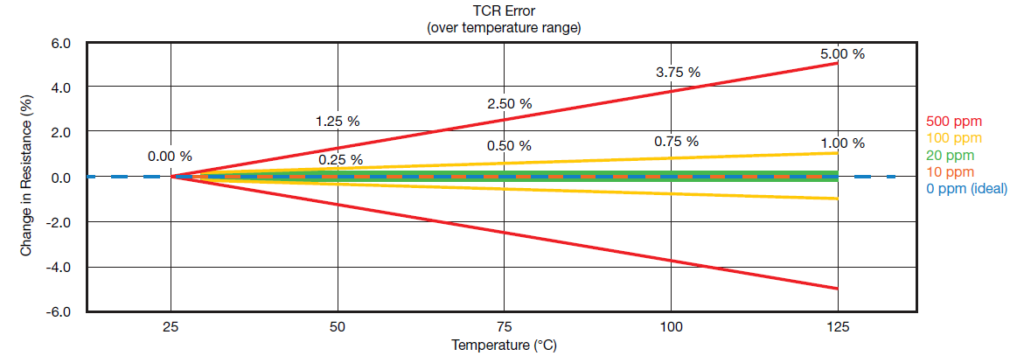
As the needed resistance value in so many designs is so small – often well below one ohm – it may seem that a quick, easy, and “free” solution to having a sense resistor is to just use a short length of the PC-board copper trace, with its size calculated to provide that exact resistance value. However, ordinary copper, such as used for PC cladding, has a typical tempco of 4000 ppm/°C or 0.4%/°C, which means any self-heating – aggravated by ambient board and product heat – will result in large drift and errors. In contrast, normal tolerance on the PC-board track width, length, and copper thickness would add to the initial error. Thus, the PC-board trace technique is only used where accuracy demands are very loose.
Sense resistors meet the need
The designer has several options in selecting a resistor which will not drift excessively in the application:
- Choose a higher wattage resistor which can dissipate the power with less temperature rise.
- Choose a resistor specifically designed for this function, with much lower inherent tempco drift.
The right choice depends on the situation, and many designers choose the second option. Although low-tempco resistors are costly, they require less board space and have greater assurance of consistent results.
Vendors offer families of low-ohm, low-tempco standard resistors with a range of power ratings. A typical “low tempco” resistor will have a tempco value around 100 ppm/°C, and there are more costly ones available with tempcos down to 10 to 20 ppm/°C and even 1 ppm/°C for precision situations (at an even higher cost, of course). But in applications where “coulomb counting” and power management are critical, the cost may be well worth it.
Some of these current-sense resistors are best suited for DC and low-frequency applications only, while others are specially designed to have low self-inductance and so can be used at higher frequencies. Current sense resistors, especially at high power ratings, often do not look like standard “chip” resistors but instead look like plain metal strips or power devices (Figures 2 and 3). They are made using highly specialized materials and proprietary fabrication techniques. Their tempcos are carefully controlled and measured, and to add to the design-analysis challenge, those tempcos are not constant over the entire operating range (Figure 4).
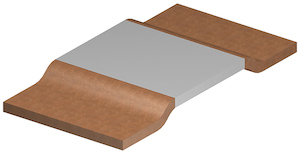
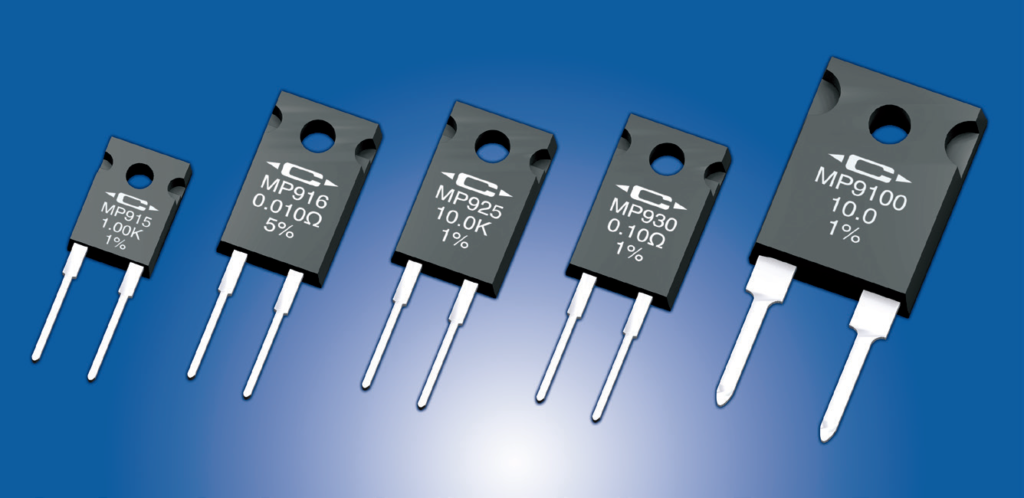

Among the many vendors of these resistors are Vishay Intertechnology, TT Electronics, Riedon, Bourns, New Yorker Electronics, Ohmite, Caddock Electronics, Stackpole, KOA Speen, and Rohm, with most offering values well below even one milliohm up to several ohms, and with power ratings from a fraction of a watt to kilowatts. When using these ultralow-resistance values, keep in mind that how contact will be made and connection resistance of the wires or PC board to the sense resistor must be added to the design analysis.
Conclusion
The apparently simple issue of how to sense current using a resistor is a good example of finding an optimal balance point among engineering tradeoffs in an easy-to-explain situation. There are many available options when sizing the resistance ohm value, temperature coefficient, and power rating. Even so, making those sizing decisions is only part of the complete solution, as there are also issues related to the electronics, which sense that voltage, Kelvin connections, high common-mode voltage, ground loops, isolation, and even safety considerations.
EEWorld Related Content
Current sense chips comes in 0603 and 0805 sizes
5-W surface-mount current sense shunt runs cool at high power levels
Power shunt current sense resistor dissipates 12 W
Current sense resistors for power supply and motor drive designs feature values down to 200μΩ
High Power Current Sense Resistor Offers Compact Solution
References
Riedon, “Understanding Resistors and Temperature
Vishay/Dale, “Temperature Coefficient of Resistance for Current Sensing
Vishay Dale, “Change Of Resistance Due To TCR Calculator
Vishay, “Shunts, Current Shunts, and Current-Sensing Resistors
Bourns, “Using Current Sense Resistors for Accurate Current Measurement
Caddock, “Non-inductive Current Sense Resistors”

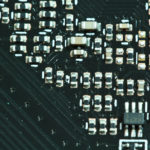
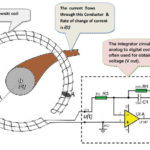
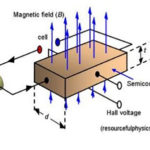

Leave a Reply